Myofascial Release
Myofascial Release (MFR)
Myofascial therapy or myofascial release (MFR) is a technique utilised by many exercise professionals including those working in rehabilitation and personal trainers. It isn't only restricted to physical therapy though, it is useful for sports therapists, massage therapists and you can even do it on yourself. It is used to treat skeletal muscle issues and pain by targeting muscles, relaxing them and simulating your stretch reflex while promoting blood circulation and lymphatic drainage. If you're new to the world of myofascial release or want to gain a better understanding of the core concepts, our article will tell you everything you need to know.
Before we dive into the specifics of myofascial release, let's first look at the functions and characteristics of fascia. Traditionally, fascia was an overlooked structure, seen as the thing in the way of getting a better view of the muscles in the body. Nowadays, however, we have a greater understanding and respect for the clear, cling-film like coating of the entire muscular system. A lot more emphasis is put on treating the fascia when it's painful although it is still regarded as alternative medicine therapy, myofascial release is however more recognised for its benefits which include pain relief, easing tension and lymphatic drainage.
Current research defines fascia as all of the collagenous-based soft tissues in the body, which includes: ligaments, bursa and tendons. This is why a lot of painful conditions and injuries can be treated with myofascial release, plantar fasciitis is a condition that involves the inflammation and irritation of the plantar fascia and can be treated with a range of techniques and products but myofascial release is instrumental in relieving pain. For more information on plantar fasciitis, please visit our Plantar Fasciitis Insoles and treatment range or have a read through our Plantar Fasciitis treatment buyers guide. Similarly, the tendons can also be damaged and because they technically count as fascia, myofascial release can be very effective for pain relief and managing the condition. Repetitive Strain Injuries are usually caused by overuse of the tendons and most Repetitive Strain Injuries result in tendonitis or tenosynovitis so myofascial release can be an effective treatment for conditions such as Tennis Elbow (Lateral Epicondylitis), Golfer's Elbow (Medial Epicondylitis) and Achilles tendonitis. Although Burtis is not a form of tendonitis or tenosynovitis, it is another type of repetitive strain injury that can benefit from myofascial release.
Characteristics of Fascia
- Transfers kinetic energy, load and force through the entire musculoskeletal system
- Has a tensile strength similar to steel
- Responds instantaneously to external and internal stimuli
- In conjunction with muscles, it provides multi-directional tensioning throughout the body
- Plays a key role in functional core stability
- Provides fluidity to motion
- Stores cellular memory
- Elicits pain
As mentioned earlier, fascia is the connective tissue that is found throughout the entire body, although this is instrumental in holding organs, bones, muscles and blood vessels in place; it is also useful for other reasons. One of the characteristics mentioned is that it responds to internal and external stimuli, the fascia is able to do this because it has nerves that are very sensitive (almost as much as our skin). It is therefore very effective for sending and receiving signals around the body. The characteristics of fascia can be grouped into mechanical, metabolic, elastic and neurovegetative. Mechanical being its ability to help facilitate movement, metabolic refers to aiding metabolism by transferring kinetic energy through the musculoskeletal system, elastic describes its tensile strength and multidirectional tensioning of muscles. Neurovegetative is another term for autonomic which means the fascia is responsible for facilitating bodily functions (digestion, respiration, heart rate, etc). Fascia can also be categorised into 3 main types, Superficial fascia, Deep Fascia and Visceral Fascia. Superficial fascia is mostly related to the skin, Deep fascia is associated with muscles, bones, nerves and blood vessels. Visceral refers to fascia that is related to the internal organs. Visceral Manipulation refers to a myofascial release technique designed to target the Visceral fascia and it is a hands-on therapeutic technique that aims to relieve pain, create better space around the organs and improve movement between the different fascial structures.
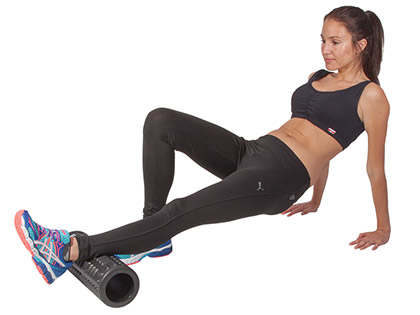
The Science of Myofascial Release
John F.Barnes (one of the world's leading experts on myofascial) bases his principles of Myofascial Release on Einstein’s famous formula E=mc2. He relates the meaning of the formula to understanding the dysfunctions associated with the myofascial system. The formula illustrates that solidity is only an illusion and that everything is energy; different frequencies of vibrational energy, to some degree or another. Barnes advocates that trauma, as well as inefficient posture and motion, can significantly change the force vectors passing through the body. This can disrupt the ability of energy to flow freely through the body, resulting in further dysfunction, inefficiency, altered bio-mechanics, injury and pain. Barnes likens the myofascial system to being the’ fibre optic’ communication system of the body. And hence, a blockage in transmission will lead to a failure to function.
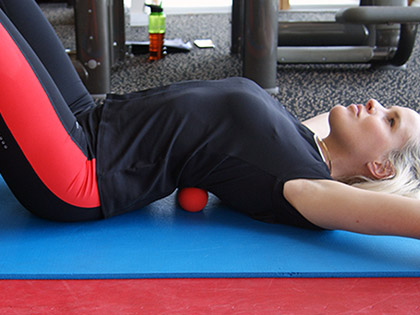
Myofascial release is not restricted to physiotherapists, sports therapists and massage therapists, you can do it by yourself without the aid of someone else or a trained professional. This is called self-myofascial release and it is used by people to treat and manage conditions effectively at home or when pain and flare-ups require some immediate relief. You can do self-myofascial release with a massage foam roller or massage ball, we have an exercise guide on massage ball exercises although this list of exercises contains other techniques as well such as trigger point therapy and deep tissue massage. We also have a buyers guide on different types of Massage Balls as well and a foam rollers exercise guide if you are interested in learning some handy techniques and tips for self-myofascial release
Myofascial dysfunction is something that affects all of us, at some point in our lives, to a greater or lesser degree. Whether it’s lateral knee pain as a consequence of a lumbopelvic pathology, or elbow pain from a rib cage problem, MFR plays a significant role in treatment and rehabilitation. We believe education and empowerment is the key to teaching individuals how to perform effective self Myofascial Release techniques. If you are a therapist or physician then please take a look at our massage tools buyers guide and the relevant massage tools section for more information on tools you can use for myofascial release, the buyers guide even covers some tools that can be used for self-myofascial release. Some massage products are effective for targeting fascial tissues, for example, Songbirds fascial release wax is designed specifically for the purpose of myofascial release, it provides extra grip which is essential for properly targeting fascial tissues. It also gives the therapist more control over the treatment by allowing them to manipulate the tissues in a variety of ways. If you are looking for more massage mediums, please check out our massage products and you can even make your own massage oil by following the relevant guide.
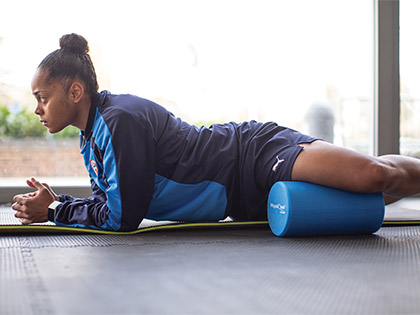
The Benefits of Myofascial Release
The basic principle of MFR is that pressure needs to be applied for 30-45 seconds to the trigger points in the myofascial system. Initially, this feels very painful but eases as the excessive tension drops. The best way to perform effective myofascial release is to use the correct equipment. For this, we specifically recommend a foam roller, which is greater for releasing larger areas such as the quadriceps. Kinesiology tape can also be used to 'offload' myofascial structures.
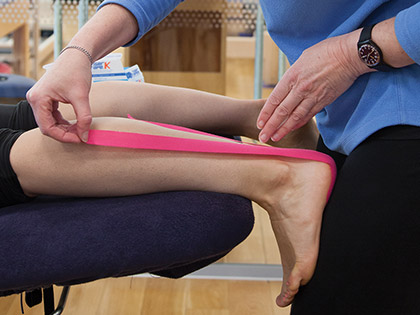
The main benefits are as follows:
- Reduction in pain
- Increase in range of motion
- Neutralisation of posture and alignment
- Restoration of optimal myofascial length-tension relationships
- Harness efficient movement and maximise function
Author: HFE (Health and Fitness Education)

This information was put together with help from our partner HFE (Health and Fitness Education)
Leading provider of personal trainer courses and fitness qualifications
Sources and References
Healey, K.C., Hatfield, D.L., Blanpied, P., Dorfman, L.R. and Riebe, D., 2014. The effects of myofascial release with foam rolling on performance. The Journal of Strength & Conditioning Research, 28(1), pp.61-68.
Kalichman, L. and David, C.B., 2017. Effect of self-myofascial release on myofascial pain, muscle flexibility, and strength: a narrative review. Journal of bodywork and movement therapies, 21(2), pp.446-451.
Travell, J. and Rinzler, S.H., 1952. The myofascial genesis of pain. Postgraduate medicine, 11(5), pp.425-434.
Schleip, R., Jäger, H. and Klingler, W., 2012. What is ‘fascia’? A review of different nomenclatures. Journal of bodywork and movement therapies, 16(4), pp.496-502.
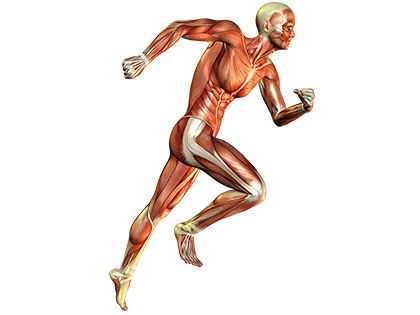
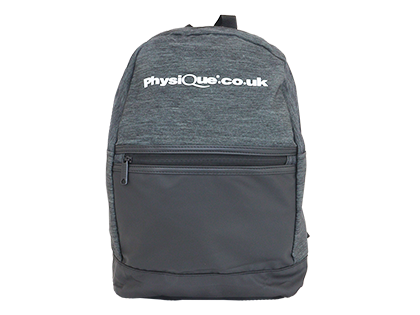
Did you find this article useful?
Why not share this with a colleague, patient or friend?